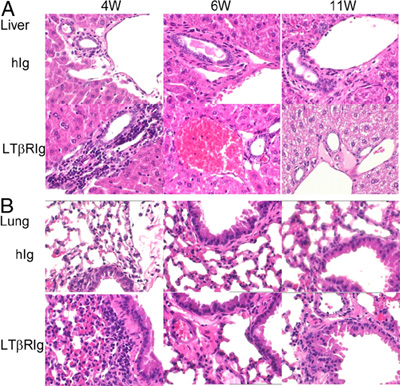The identification of individuals genetically susceptible to cancer calls for preventive measures to minimize the cancer risk in these high-risk populations. Immune prevention is made necessary by the anticipated health threat, but lack of enough high-affinity T cells against tumor-associated antigens and the unpredictability of tumor antigens make antigen-based immune prevention untenable or cancer. To address this issue, researchers from the University of Michigan, IBP and the University of Chicago explored a non-antigenbased cancer immune prevention strategy using the transgenic adenocarcinoma of mouse prostate model that spontaneously develops prostate cancer with 100% penetrance. Their study showed that targeted mutation of the lymphotoxin _ (LT_) gene efficiently rescued tumor-reactive T cells, drastically reduced cancer incidence, and almost completely ablated metastasis. Remarkably, short-term treatments with the fusion protein consisting of constant region of IgG and extracellular domain of lymphotoxin _ receptor (LT_RIg) interrupted clonal deletion, reduced the size of the primary cancer, and completely prevented metastasis later in life. Their data demonstrated the value of non-antigen-based immune prevention for those with a genetic predisposition to cancer.
This original work was published on the Proceedings of the National Academy of Sciences of the United States of America (vol. 106, no. 40) on October 6, 2009.

Fig. Identification of a time window to avoid lymphocyte infiltration associated with LTβRIg treatment. Four-, 6-, and 11-week-old C57BL/6 mice received three weekly i.p. injections with 100 μg of either soluble murine LTβRIg or human IgGFc. The mice were killed 4 weeks after the last injection. Peripheral organs were collected for H&E staining. (A) Lymphocyte infiltration into the liver was only observed when the treatment was initiated at 4 weeks, but not at 6 or 11 weeks. (B) Infiltration to the lung was only observed if the treatment was initiated at 4 weeks of age.
|